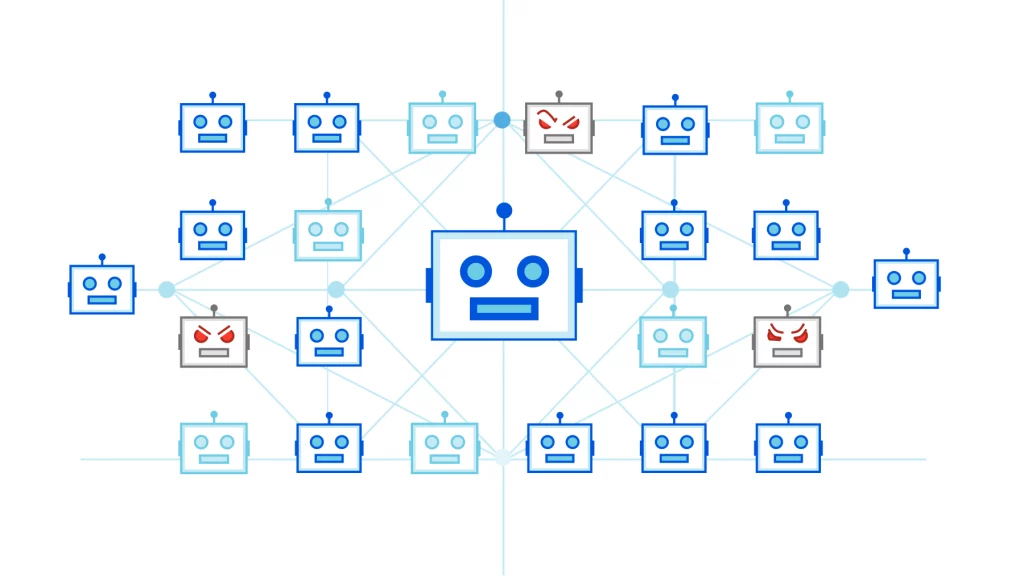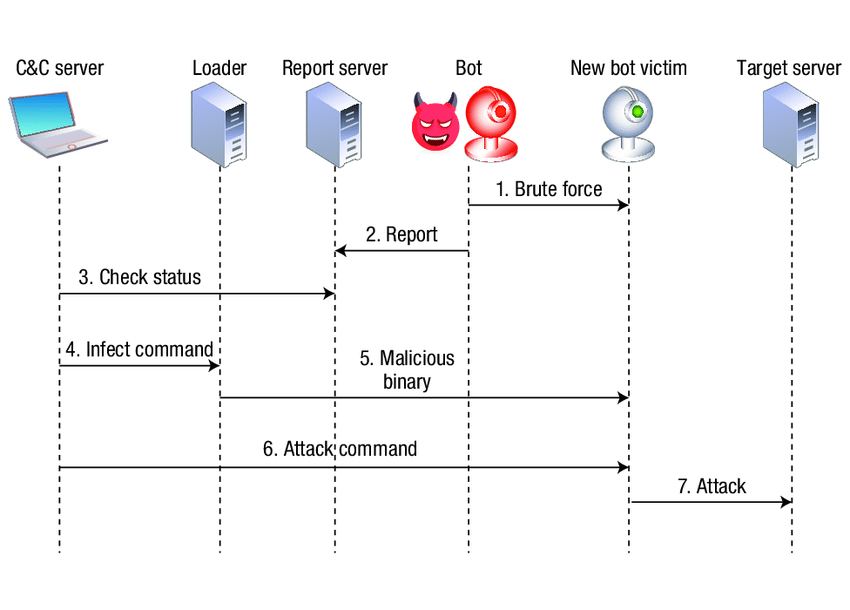 Introduction to the Mirai Botnet
Introduction to the Mirai Botnet
Picture this: a silent intruder lurking in the shadows of the internet, ready to strike at any moment. Meet the Mirai botnet – a powerful force that has taken down websites, disrupted services, and left cybersecurity experts scrambling to contain its destructive capabilities.
In this blog post, we delve into the world of Mirai to uncover its origins, how it works, notable attacks it has carried out, and most importantly – what you can do to protect yourself from falling victim to its malicious intents.
So sit tight and get ready for a deep dive into the mysterious realm of the Mirai botnet.
History and Development of Mirai
The Mirai botnet made its debut in 2016, unleashed on the internet by a group of hackers. It was designed to target Internet of Things (IoT) devices, exploiting their weak security protocols to recruit them into a powerful network used for malicious activities.
Mirai quickly gained notoriety for its ability to launch distributed denial-of-service (DDoS) attacks with unprecedented scale and efficiency. The botnet’s creators continuously refined and updated it, adding new features and capabilities to stay ahead of defense mechanisms.
Over time, Mirai evolved into multiple variants, each more sophisticated than the last. These iterations posed an increasing threat to cybersecurity professionals around the world as they struggled to combat the expanding reach of the botnet.
Despite efforts to dismantle Mirai infrastructure and bring its operators to justice, the legacy of this potent malware still looms large over cyberspace today.
How Does the Mirai Botnet Work?
 The Mirai botnet operates by scanning the internet for vulnerable IoT devices, such as routers and security cameras. Once identified, it tries common default usernames and passwords to gain access. Upon successful infiltration, these devices become part of a network controlled by malicious actors.
The Mirai botnet operates by scanning the internet for vulnerable IoT devices, such as routers and security cameras. Once identified, it tries common default usernames and passwords to gain access. Upon successful infiltration, these devices become part of a network controlled by malicious actors.
Through a command-and-control server, the compromised devices receive instructions to carry out coordinated attacks on specific targets. These attacks can range from flooding websites with traffic (DDoS) to spreading malware or participating in other nefarious activities.
Mirai’s strength lies in its ability to enlist thousands of devices into its network, amplifying its impact significantly. Its distributed nature makes it challenging to mitigate effectively without disrupting legitimate services online.
To protect against Mirai and similar threats, it is crucial for users to regularly update their device firmware and change default login credentials.
Additionally, utilizing VPN services can add an extra layer of security by encrypting internet traffic and masking device IP addresses.
Infamous Attacks by Mirai
The Mirai botnet has been behind some of the most notorious cyberattacks in recent years, targeting a wide range of internet-connected devices. From disrupting major websites to causing widespread internet outages, Mirai’s impact has been felt across the globe.
One of the most infamous attacks attributed to Mirai occurred in 2016 when it targeted Dyn, a major DNS provider. This attack resulted in popular websites like Twitter, Netflix, and Spotify becoming inaccessible for hours, highlighting the vulnerability of IoT devices to botnet exploitation.
Mirai’s ability to harness thousands of compromised devices simultaneously makes it a formidable threat. By infecting vulnerable IoT gadgets such as security cameras and routers, attackers can launch distributed denial-of-service (DDoS) attacks with unprecedented scale and power.
Despite efforts to mitigate its effects, Mirai continues to evolve and adapt to security measures. Its decentralized nature and constantly changing tactics make it a challenging adversary for cybersecurity professionals striving to protect networks from malicious intrusions.
As technology advances and more devices become connected online, the potential for future Mirai-like botnets remains a significant concern within the cybersecurity community. Vigilance and proactive measures are essential in combating these evolving threats posed by IoT-based malware like Mirai.
Impact on Cybersecurity and Internet Infrastructure
 The Mirai botnet has left a lasting impact on cybersecurity and internet infrastructure worldwide. Its ability to harness vulnerable IoT devices for large-scale DDoS attacks has raised concerns about the security of interconnected systems.
The Mirai botnet has left a lasting impact on cybersecurity and internet infrastructure worldwide. Its ability to harness vulnerable IoT devices for large-scale DDoS attacks has raised concerns about the security of interconnected systems.
Cybersecurity experts have been forced to reevaluate their strategies in defending against such widespread threats, prompting advancements in threat detection and response mechanisms. The sheer scale of Mirai’s attacks has highlighted the importance of proactive measures to safeguard critical networks.
Moreover, the proliferation of IoT devices without robust security features has exposed a significant vulnerability in our digital ecosystem. As more connected devices come online, the potential surface area for botnet exploitation continues to expand, necessitating continual vigilance and innovation in cybersecurity practices.
The repercussions of Mirai’s impact are far-reaching, underscoring the need for collaboration among stakeholders to fortify defenses against evolving cyber threats. In an increasingly interconnected world, bolstering cybersecurity resilience is paramount to ensuring the stability and reliability of our digital infrastructure.
Steps Taken to Mitigate Mirai Attacks
In response to the growing threat posed by the Mirai botnet, cybersecurity experts and organizations worldwide have implemented various strategies to mitigate its attacks. One of the key steps taken is enhancing network security measures to prevent unauthorized access and exploitation of vulnerable devices. This includes regularly updating software and firmware, implementing strong passwords, and disabling default settings that are often targeted by Mirai.
Additionally, proactive monitoring of network traffic for any suspicious activity has become crucial in detecting potential Mirai botnet infections before they can cause significant harm. Collaborative efforts between industry stakeholders through information sharing platforms have also proven effective in identifying new attack vectors and developing timely countermeasures against Mirai.
Moreover, raising awareness among IoT device manufacturers and users about the importance of security practices has been emphasized to prevent their devices from being compromised by Mirai or similar botnets. By staying vigilant and continuously adapting defense mechanisms to evolving cyber threats like Mirai, we can collectively work towards a safer digital landscape.
Future of Mirai and Other IoT-Based Botnets
 As technology advances, the future of Mirai and other IoT-based botnets is uncertain. With the rise of smart devices interconnected through the Internet of Things (IoT), the potential for more sophisticated botnets to emerge is a looming threat.
As technology advances, the future of Mirai and other IoT-based botnets is uncertain. With the rise of smart devices interconnected through the Internet of Things (IoT), the potential for more sophisticated botnets to emerge is a looming threat.
Developers are continuously working on improving security measures to prevent such malicious attacks. However, cybercriminals are also evolving their tactics, making it a constant battle between cybersecurity experts and hackers.
The ability of these botnets to exploit vulnerabilities in IoT devices poses a significant risk to individuals, businesses, and even critical infrastructure systems. As more devices become connected, the attack surface for botnets continues to expand.
It’s crucial for both consumers and manufacturers to prioritize security measures when deploying IoT devices. Regular software updates, strong passwords, and network segmentation can help reduce the risk of falling victim to these types of attacks.
Vigilance and proactive security practices will be key in safeguarding against future threats posed by Mirai and other IoT-based botnets.
Use VPN against Mirai Botnet
To protect yourself against the Mirai botnet and other similar threats, one effective measure is to use a Virtual Private Network (VPN). By encrypting your internet connection, a VPN creates a secure tunnel that shields your online activities from prying eyes. This added layer of security can prevent cybercriminals from infiltrating your devices through vulnerabilities exploited by botnets like Mirai.
When you connect to a VPN server, your real IP address is masked, making it harder for malicious actors to track you or launch attacks on your network. VPNs also help in bypassing geo-restrictions and censorship while enhancing your overall privacy and anonymity online.
Additionally, using a reputable VPN service can offer protection against DDoS attacks commonly associated with botnets like Mirai. It adds an extra barrier between your devices and potential threats lurking on the internet, giving you peace of mind as you browse the web securely.
Best VPN against Botnets
HideIPVPN offers a VPN service with military-grade encryption, and high-speed servers with unlimited bandwidth.
Our service comes with shared IP addresses so that your activity can never be tied to one particular user, further protecting your privacy.

We also offer DNS leak protection, a Kill Switch, the latest VPN protocols, and a guaranteed no-log policy.
Best VPN Deal! Get HideIPVPN for $2.7/mo!
Every purchase you make comes with a 30-day money-back guarantee.
Conclusion
As cyber threats continue to evolve, the Mirai botnet remains a prominent example of the dangers posed by insecure IoT devices. Its ability to launch massive DDoS attacks has had significant repercussions on cybersecurity and internet infrastructure worldwide. While steps have been taken to mitigate these attacks, such as improved device security and network monitoring, the fight against Mirai and similar botnets is far from over.
In this rapidly changing digital landscape, staying informed about emerging threats like Mirai is crucial for safeguarding our interconnected world. By taking proactive measures like using VPNs and ensuring strong password protection on IoT devices, individuals can play a part in enhancing cybersecurity resilience.
The future of Mirai and other IoT-based botnets will likely involve continued innovation on both sides – attackers seeking new vulnerabilities to exploit and defenders working tirelessly to stay one step ahead. As technology advances, it is essential for all stakeholders – from individuals to organizations and governments – to collaborate in creating a more secure cyberspace for everyone.
Together, we can work towards minimizing the impact of malicious botnets like Mirai and building a safer online environment for all users. Stay vigilant, stay informed, and together we can make cyberspace a more secure place for generations to come.


